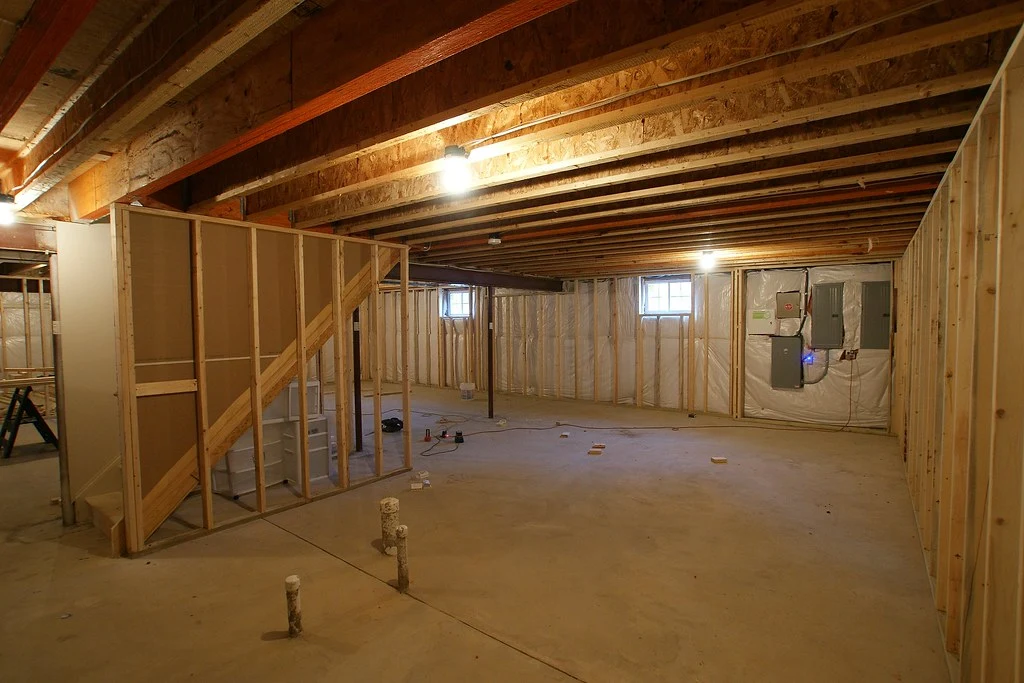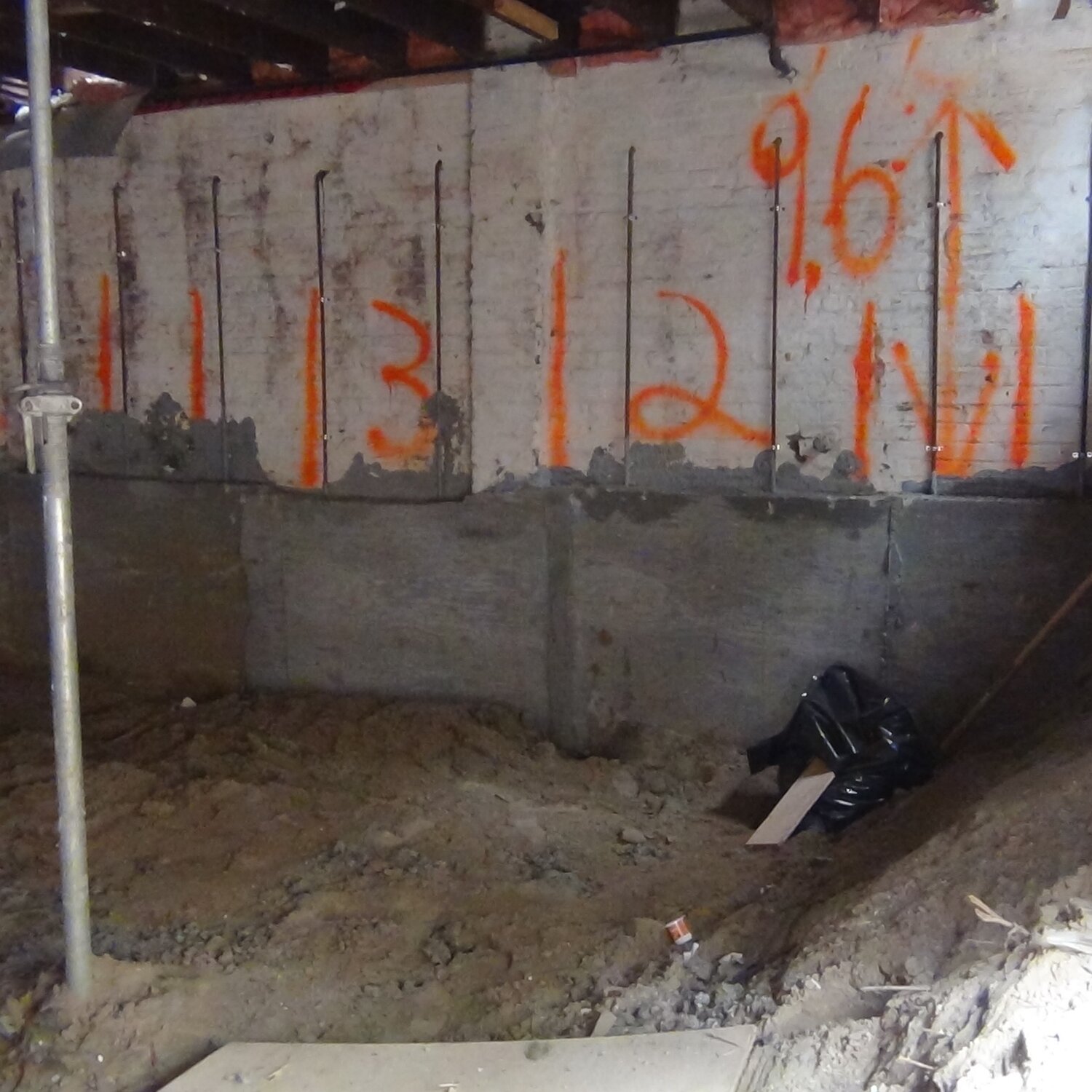Strengthen Your Framework with Bench Footings Toronto Specialists
Strengthen Your Framework with Bench Footings Toronto Specialists
Blog Article
Whatever You Need to Understand About Basement Foundation for a Stronger Home
Cellar underpinning is a vital process that can dramatically boost the structural stability of a home. Whether you are considering renovating your basement or have seen indicators of foundation problems, understanding the ins and outs of underpinning is important. From identifying the signs that your home might take advantage of underpinning to the costs involved and post-underpinning maintenance, this comprehensive overview will certainly shed light on the complexities of this construction technique. Keep tuned to uncover exactly how basement underpinning can not just enhance your home however additionally give satisfaction for several years to come.
Advantages of Basement Underpinning
Basement foundation supplies considerable architectural reinforcement and increased security to homes, ensuring long-lasting security and resilience. One of the key advantages of basement underpinning is the capacity to reinforce the structure of a building, specifically in situations where the existing structure is compromised or jeopardized. By expanding the depth or width of the structure, underpinning disperses the weight of the structure better, reducing the threat of settlement or structural failure with time.
Moreover, basement foundation can create added space or permit for the building and construction of a basement in homes that do not currently have one. This can considerably increase the worth of the home and offer more useful room for the house owners. In addition, support can aid prevent water infiltration and improve the general power performance of the building by sealing fractures and spaces in the foundation.
Signs You Need Underpinning
Provided the structural support and security advantages that basement base supplies, it is vital to be knowledgeable about particular indications that might signify the demand for this fundamental fortifying strategy. One typical sign that your home might call for support is the existence of fractures in the walls, specifically if they are diagonal or bigger than a quarter of an inch. In addition, doors or home windows that are sticking or no longer closing correctly could suggest a changing structure that requires base. Uneven or sloping floors, especially in older homes, might likewise recommend fundamental problems that underpinning can attend to properly. If you see voids in between the wall surfaces and the ceiling or in between the wall surfaces and the floor, it can be an indication of structure negotiation, motivating the requirement for base. Last but not least, any kind of noticeable indicators of wetness or water damage in the basement can be a sign of a compromised foundation that needs underpinning to stop further structural damage. Routinely evaluating your home for these signs can help you recognize the demand for underpinning at an early stage, ensuring the structural honesty of your property.
Process of Underpinning

To start the process of base, a thorough evaluation of the existing structure's condition is carried out by certified architectural engineers. As soon as the evaluation is total and support is considered required, the underpinning procedure commonly starts with digging deep into areas of the existing structure websites in a tactical way.
After the support system remains in place, the following action includes slowly filling up the dug deep into areas with high-strength cement to secure the brand-new foundation assistance in setting. Throughout the underpinning procedure, mindful monitoring and adjustments are made to guarantee that the foundation is properly strengthened and that the structural integrity of the building is preserved. By adhering to a systematic strategy and adhering to market best methods, underpinning can efficiently strengthen the foundation of a home and alleviate architectural problems.
Cost Considerations
Taking into consideration the monetary ramifications of underpinning a basement is important for home owners wanting to enhance their building's foundation. The expense of foundation can vary dramatically depending upon various aspects such as the size of the basement, the depth of the underpinning required, the existing condition of the structure, and the certain underpinning approach chosen. Typically, house owners can expect to pay anywhere from $1,000 to $3,000 per direct foot for underpinning solutions. This means that for a normal 30-foot basement, the total price can range from $30,000 to $90,000 - basement underpinning services toronto.
It's crucial for property owners to acquire multiple quotes from reputable underpinning professionals to ensure they are getting a fair cost for the job required. Additionally, it is very important to budget for any type of unexpected circumstances or added expenses that might develop throughout the underpinning process. While the cost of underpinning might appear high, it is a required financial investment to ensure the architectural stability and security of the home in the long term.
Upkeep After Underpinning
Adhering to the conclusion of basement base, routine maintenance is essential to maintain the structural enhancements and make sure long-lasting stability of the home. As soon as underpinning is done, house owners ought to carefully check the cellar for any type of indicators of fractures, water infiltration, or changes in the structure. Routine check inspections by a certified specialist can assist catch any type of issues beforehand, preventing prospective pricey repair services in the future.
It is important to maintain appropriate drainage around the structure to protect against water damages. Rain gutters should be maintained clean, and downspouts need to guide water away from your house. Any landscape design around the foundation should incline far from the home to stay clear of water merging near the cellar wall surfaces.

Furthermore, preserving regular moisture levels within the basement is crucial to avoid moisture-related issues. Correct ventilation and the usage of dehumidifiers can help control humidity levels and secure the recently enhanced foundation.
Final Thought
Finally, cellar underpinning is a beneficial process for reinforcing the structure of a home. By recognizing the indicators that indicate the need for support and recognizing the procedure and prices involved, homeowners can ensure the stability and safety of their residential property - basement lowering toronto. Appropriate upkeep after underpinning is necessary to lengthen the life-span of the foundation and avoid future problems
One of the crucial advantages of basement support is the capability to reinforce the foundation of a residential or commercial property, specifically in cases where the existing foundation is damaged or jeopardized. As soon as the assessment is total and foundation is regarded necessary, the underpinning process normally begins with excavating sections of the existing structure in a calculated fashion. The cost of underpinning can differ considerably depending on various variables such as the size of the basement, the depth of the underpinning required, the present problem of the foundation, and the particular underpinning technique picked. When base is done, More Info homeowners ought to vigilantly monitor the basement for any kind of signs of splits, water seepage, or changes in the foundation.In final thought, cellar support is an advantageous process for reinforcing the structure of a home.
Report this page